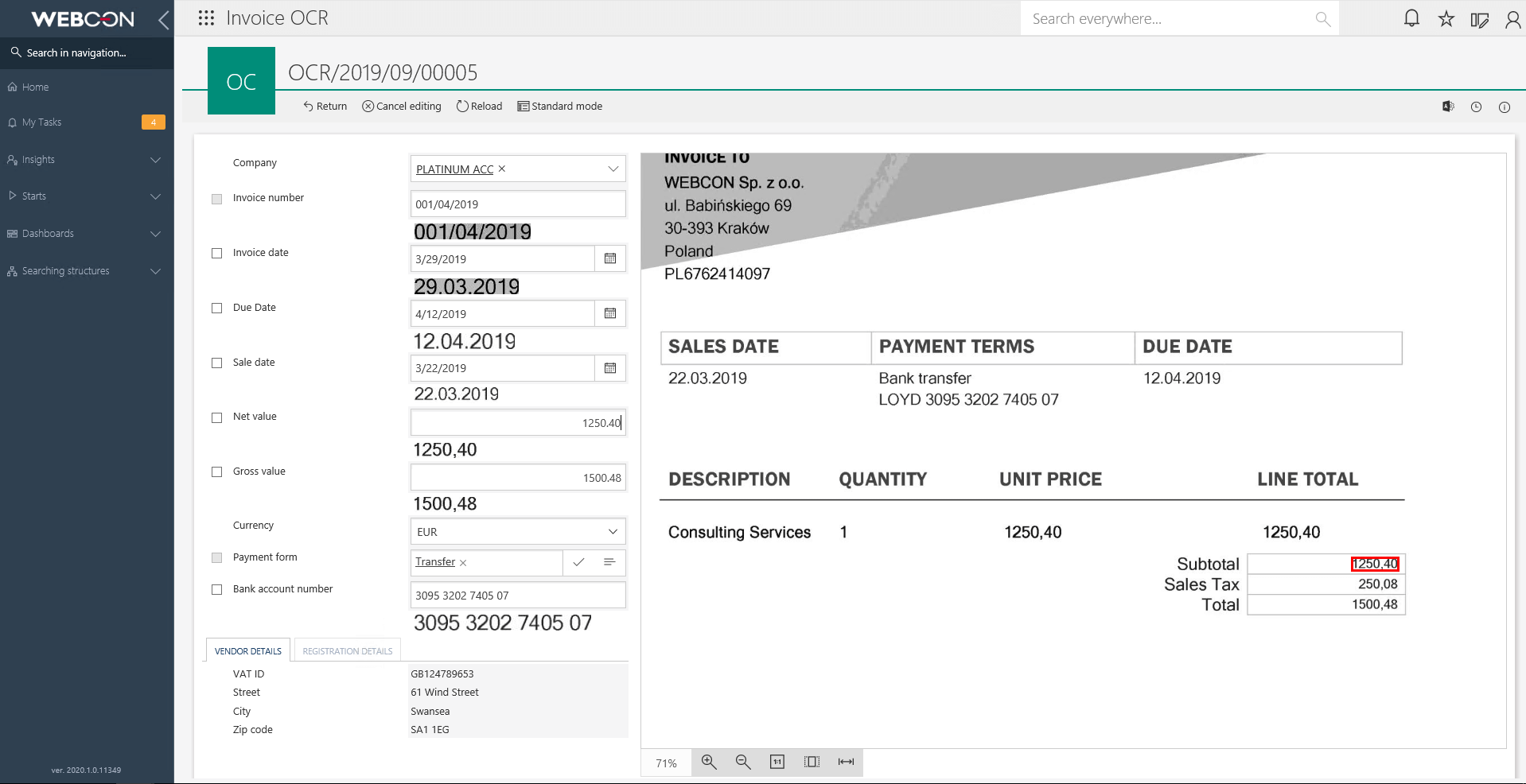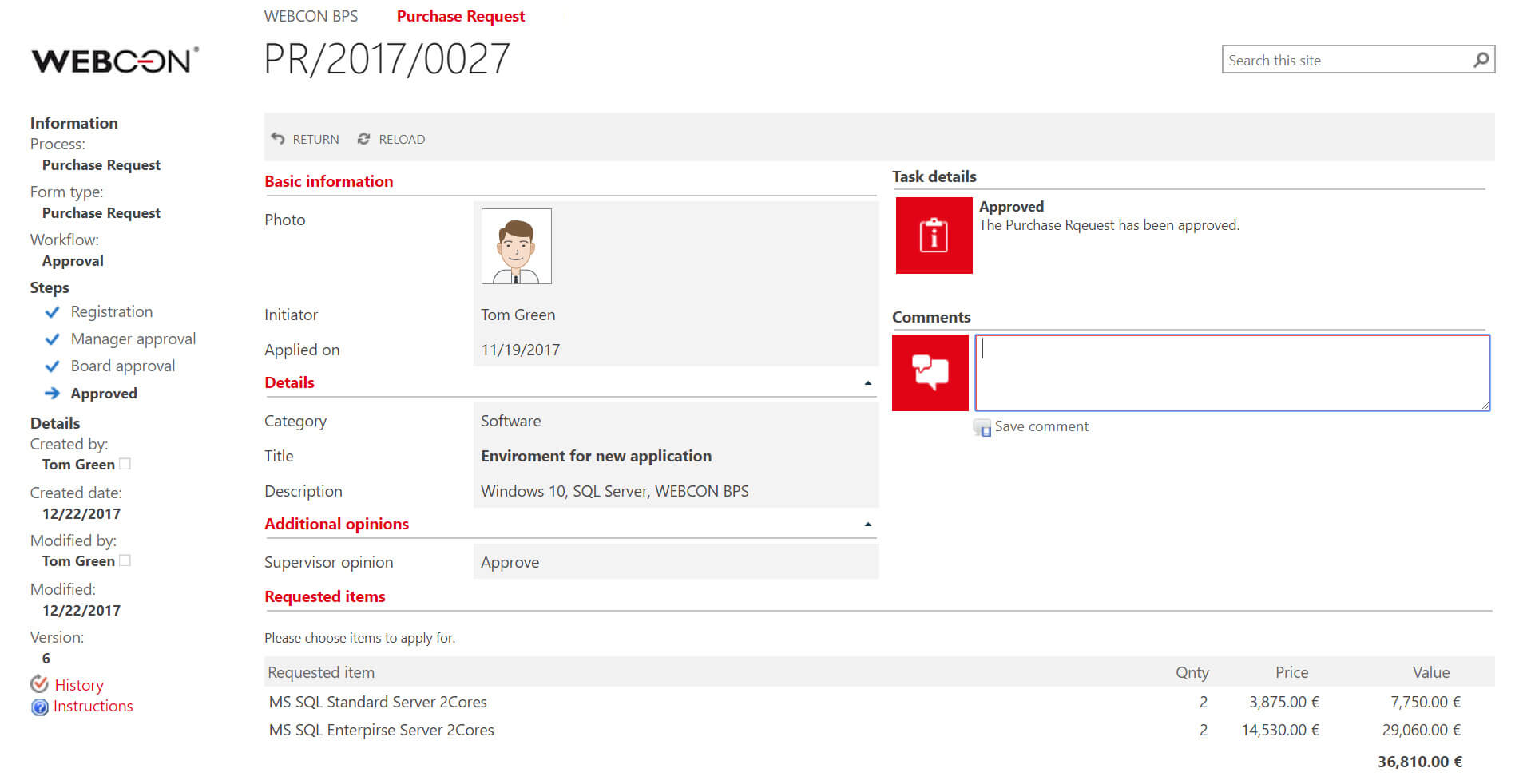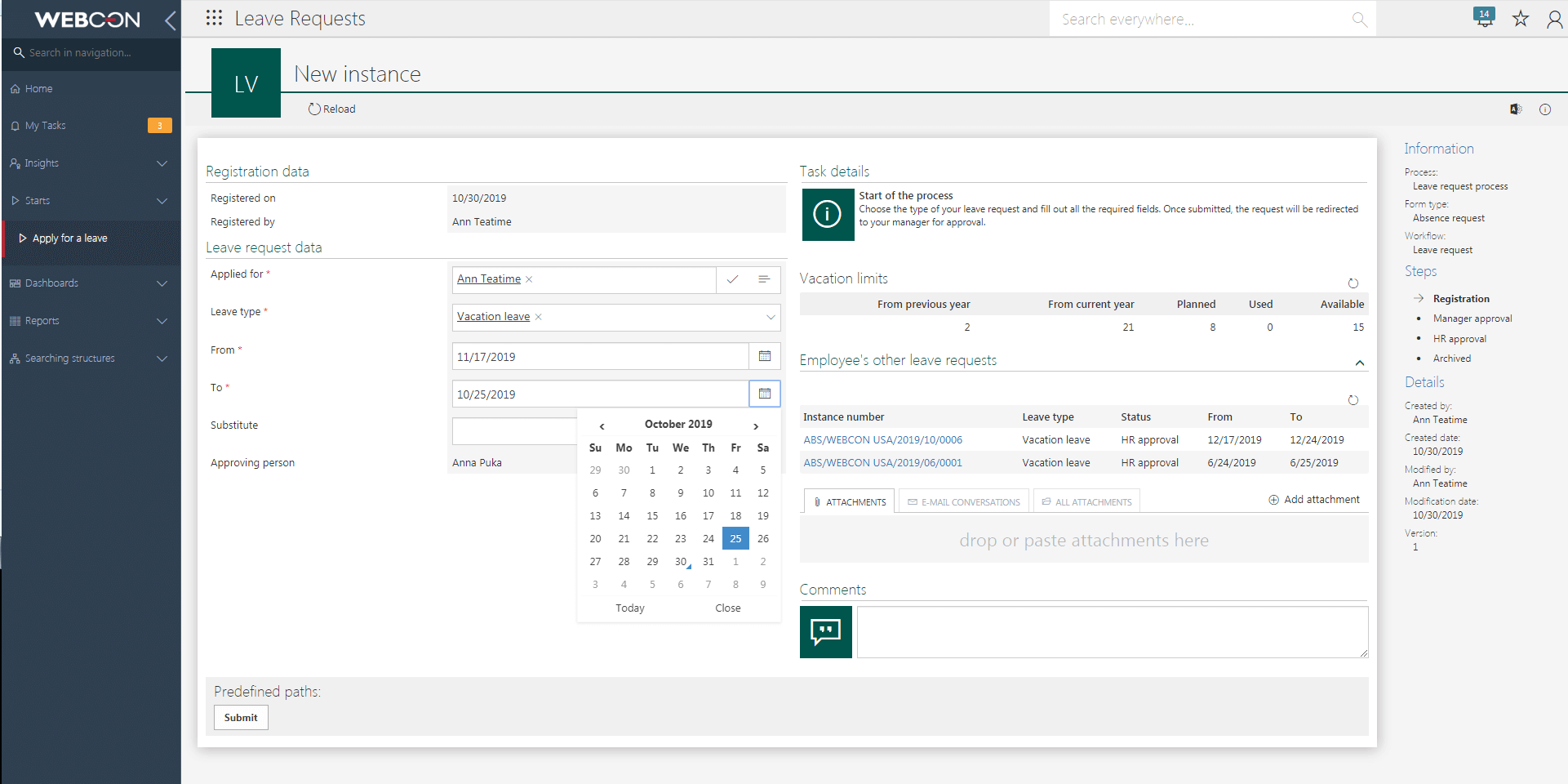Five Core Workflows That Can Be Improved With WEBCON
As organizations begin thinking about digital transformation, one of the questions often asked is “Where do I begin?” Whenever I hear this question, I think back to the early days of my career as a technical writer and business analyst, and a really great manager who told me that “every business problem begins with a business analyst engagement.” She may have been biased: she began her career as a BA, and at the time she managed a large team of BAs and project managers. But she was a strong operations manager who understood that organizations need to continually look for opportunities to streamline and improve.
As I’ve progressed in my career and become involved in various business automation and transformation activities, I have remembered her advice and try to keep a BA-mindset, constantly reviewing core business activities for opportunities for improvement. To answer the question of “Where do I start?” I typically recommend that organizations review current systems and identify highly manual and repetitive processes, most of which can immediately benefit from automation.
As I’ve started working with WEBCON these past couple months and become more familiar with their approach to business process automation, I’ve been impressed with the depth and breadth of features that improve upon the out-of-the-box SharePoint experience. To help you better understand where to start your automation journey, my goal in this post is to point you toward five of the most common business activities that can be automated, including the key benefits of each solution — and how WEBCON can provide additional value to your automation efforts.

Electronic cost invoice workflow
Most major document management systems include some kind of basic invoicing capabilities, enabling correct registration and processing of all types of purchase invoices, including cost and material invoices, as well as the ability to provide value and quantity adjustments. The benefits of automating this process include reducing overall processing time, enforcing standards and procedures, and improving the ability to monitor and measure the results of this process.
WEBCON provides a number of benefits for your electronic cost invoice workflow, including support for barcode and scanner (OCR) capabilities, the ability to build multilevel conditional workflows, dramatically improved data analysis, granular integrations to your transactional systems, and much more.
Read more about how WEBCON can improves your invoice workflows.
Correspondence workflow
For many industries, it is important to keep proper track of every single document that leaves the company, registering each sent item in the system and the communication channel used. The purpose is to enable clear identification of each digital asset, including when it left the company, when it reached its destination, and any other important status information.
WEBCON supports workflows of incoming and outgoing correspondence by enabling one-and two-dimensional barcodes for document identification and search, asynchronous scanning of documents in the background, OCR document support for the search of attachments and automatic, the ability to start sub-workflows so that the correspondence registered at the front desk can be automatically moved to a workflow path assigned to a given document type, and much more.
Read more about how WEBCON can improve your correspondence workflows.
 Purchase order workflow
Purchase order workflow
Creating a purchase order workflow is one of the most common scenarios — and one of the most business-critical. Because it affects practically all company staff, streamlining this process will not only make it easier to support, but also reduce the time spent by employees on administrative tasks.
Of course, streamlining purchase orders also has financial benefits. With a standardized and automated process, the organization will have more timely data, better control over company expenditures, and less waste of ordered goods. Additionally, automation means the elimination of paper-based documents, which reduces print costs, saves trees, AND reduces the time normally spent on collecting signatures.
Essential WEBCON features include the ability to model any approval workflow, including a conditional multi-level flow involving purchase order parameters (e.g. limit amounts, categories, etc.) or the properties of the purchase order-submitting party, support of temporary replacements and task delegation, full-scale monitoring of registered and processed purchase orders including the history of approvals and changes, integration with company IT systems to leverage their dictionaries (e.g. ERP dictionary of external suppliers), and much more.
Read more about how WEBCON can improve your purchase order workflows.
Business trip workflow
Another common business process that can have a degree of complexity under the hood is electronic support for business travel requests. Registration and reimbursement of domestic and foreign travel usually involves registration of a business trip by the delegated person or their immediate supervisor, assignment to a cost center, department or project, application approval by immediate supervisor, entering transportation details and details of other travel expenses, registering business trip costs in the financial accounting system, and other financial activities.
Beyond the OOTB workflow features, WEBCON includes the possibility of in-house modeling of any number of HR-related requests with no additional costs for external services, temporary replacement support and task delegation, the ability to modify an existing workflow in case business procedures change including modifications made by the IT department on the client’s side, full monitoring of the registered and processed requisitions including the history of approvals and changes, process reporting including the identification of bottlenecks, and much more.
Read more about how WEBCON can improve your business trip workflows.
 Leave request workflow
Leave request workflow
And finally, we have the submittal of a leave request and necessary approvals. Another common workflow, this business process involves an applicant, their immediate supervisor, and the personnel department, among other steps. Processing a leave request usually involves automatic verification of the amount of leave an applicant is entitled to at the registration stage, verification of dates based on leave requests submitted in the department to coordinate absences, supervisor approval, and notifications to the personnel department and the HR system.
One powerful feature in WEBCON is the ability to link additional actions to each step of the process. This might include emailing the supervisor after submitting the leave request and emailing the substitute once the request is approved, entering the approval into the HR system, notifying customers assigned to a given employee, etc.
Other essential features of WEBCON include efficient temporary replacement support and task delegation, full-scale monitoring of the registered and processed requests including history of approvals and implemented changes, process reporting including identification of bottlenecks, integration with company HR systems and Microsoft Exchange, and much more.
Read more about how WEBCON can improve your leave request workflows.
—
No matter where your organization is in its digital transformation journey, there will always be opportunities for business process automation, and to streamline those mundane and repetitive operational activities. Hopefully I’ve shown you how WEBCON can reduce the time it takes to automate these core workflows, and the additional value they provide to the OOTB experience. WEBCON is a powerful, flexible, and dynamic solution that will become a key component of your change management strategy. Learn more about WEBCON.

 Purchase order workflow
Purchase order workflow Leave request workflow
Leave request workflow



1 Response
[…] Five Core Workflows That Can Be Improved With WEBCON [buckleyPLANET] […]